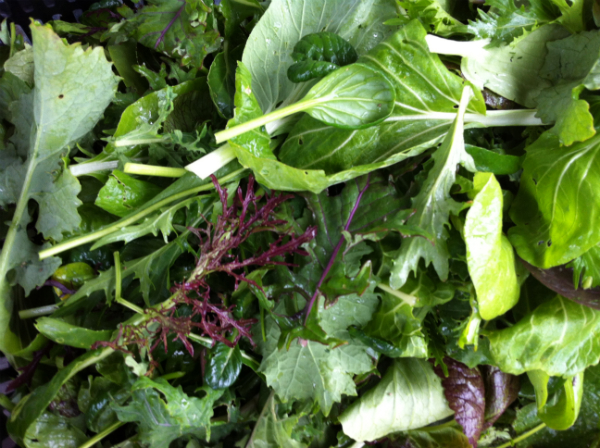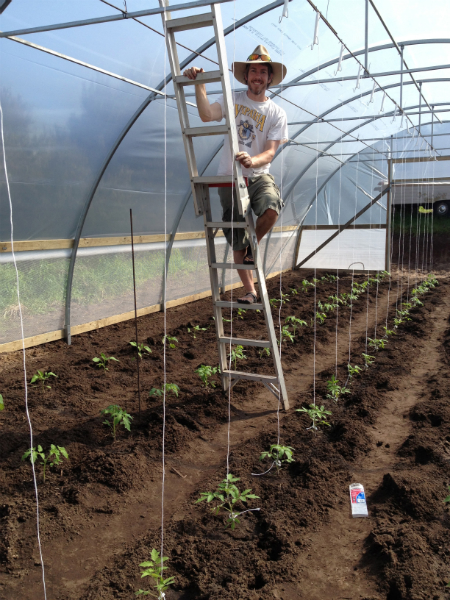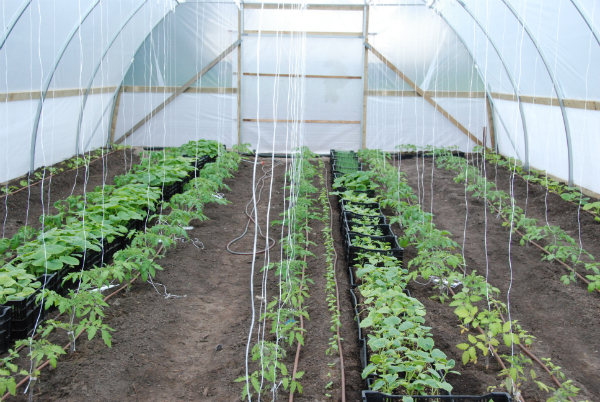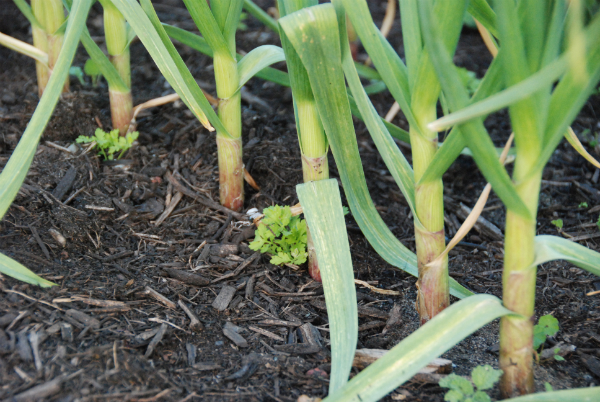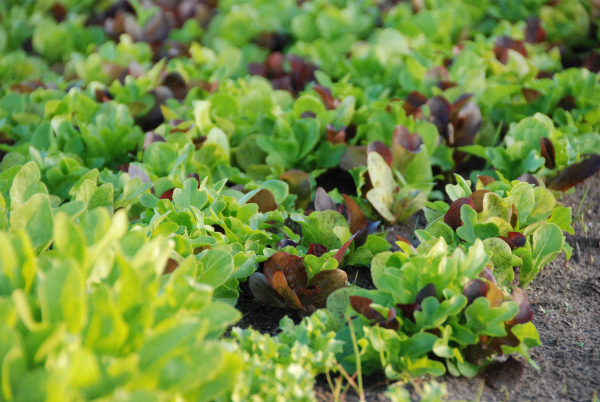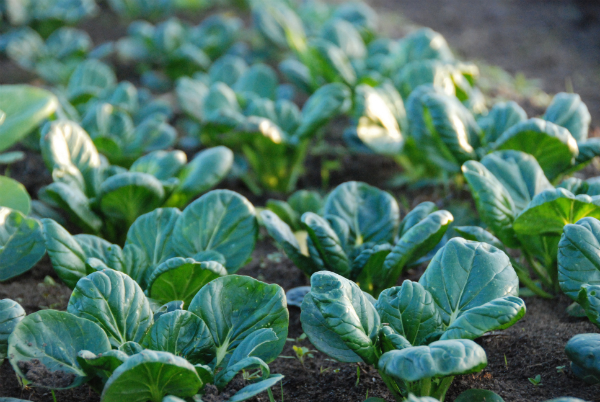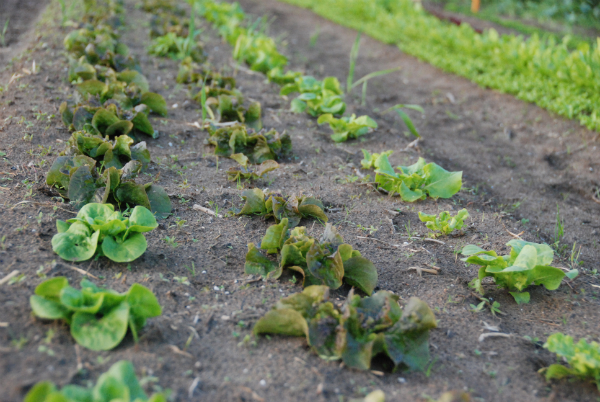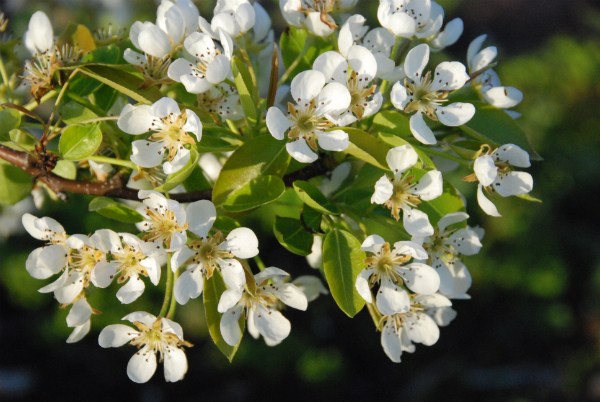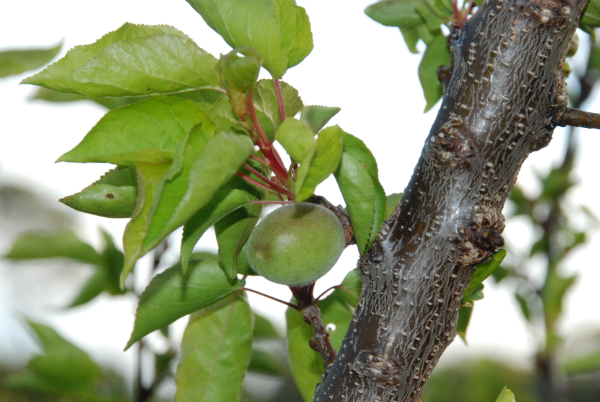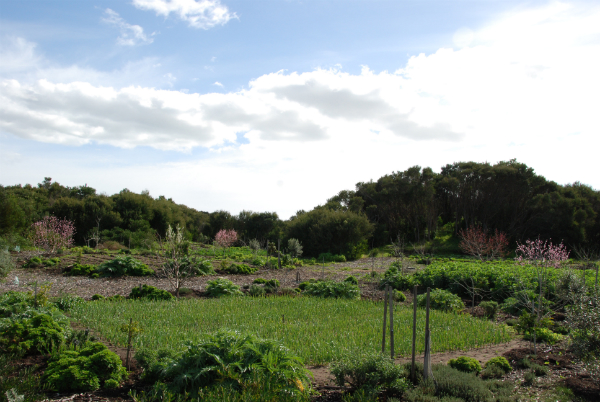As our Spring CSA Season gets underway it seems like a good time to write about what our CSA farm is all about – and what it is not.

There are many variations on the models of CSA and numerous explanations of what CSA means… we have included links on our website – but the USDA sums it up surprisingly well… “Community Supported Agriculture consists of a community of individuals who pledge support to a farm operation so that the farmland becomes, either legally or spiritually, the community’s farm, with the growers and consumers providing mutual support and sharing the risks and benefits of food production.”
For us, CSA is a relationship of mutual support and commitment between farmers and members. In return for a seasonal membership fee to help cover the production costs of the farm, CSA members receive a weekly share of quality, organically-grown produce from our farm. When "consumers" obtain food from local farmers, they are directly supporting sustainable agriculture in their community as well as receiving the freshest available produce. We provide practical education for people wishing to grow food (on any scale) and we are trying to promote small-scale agriculture as being a viable and sustainable method of feeding local communities…as it used to be.
All of the food received by our CSA members is started from seed, planted out and grown on our farm and then delivered (or picked up) within 24 hours of harvest. This is local, seasonal, fresh, nutrient dense produce. We grow everything using Organic and Biodynamic practices.
For us, LOCAL means our farm’s location
SEASONAL means the weather on our farm
FRESH means picked yesterday
NUTRIENT DENSE means produce that is really filled with the minerals and nutrients you expect – and was grown without artificial chemicals and fertilizers.
Like any farm – we have our crop failures, weather nightmares and human errors.
The CSA model we have adopted is one where the CSA members share the risks and the bounty with us. In return they know who has grown the food they are eating each week, how it was grown, when it was picked and how far it has traveled to get to their plate. From our experience this means that some weeks the boxes we provide our members are overflowing and some weeks they are not as full as we had planned. Some weeks there is a nice balance with what’s in the box – even including nectarines, melons and watermelons - and other weeks the box is filled with lots of different leafy greens. Even though we plan for a box that will suit many different tastes and family situations, our best efforts do not always guarantee this will happen. This year for example, unrelenting wind and occasional hail have made it seem more likely that broccoli will be ready in November even though it was planned for mid October. These are the realities of eating from the box. No matter what the yield, the food received by our CSA members is not only good for them - Our goal is to produce the food while bettering the natural system within which it is growing.

WHAT WE ARE NOT is a convenient weekly vegetable and fruit box scheme – that is beyond our understanding of what a true CSA model is all about. These “box schemes” more often than not source products from all over the country (or world), just as most grocery stores do. They are catering to our ideas about what is in season. There may be no opportunity to build a relationship with any of the farmers involved and it is difficult to even find out where the produce really came from and how long that process took.
Our members do not receive carrots from us in early October, they do not eat tomatoes from us in August and they are probably hanging out for beans and sweet corn in November – but all we can provide is what can be grown on our farm for our members in our community with our climate and our season.
We recognize the challenges posed by eating a seasonal diet – especially as what is seasonal is clouded by the availability of everything in all seasons. We try to “sweeten” the deal by sharing ideas as a community about what seasonal meals look like, building poly tunnels to push the seasons, covering produce with row covers to help it grow protected from the weather, planting extra crops just in case. We continue to grow as growers, learning more about this art we call farming. We keep experimenting with new varieties, new planting times, different row spacing, all in hopes of filling the boxes with diversity and quality. We think about our resources such as water and soil and devise systems which use these wisely and continue to renew them – Building soil fertility and using water conservation practices. We hope that our members will participate in whatever capacity they feel inclined. We have many volunteers helping with harvesting, weeding, planting. We have farm Open Days and workshops and U-pick crops for members.

Last year we priced our boxes against two local sources – the grocery store and an organic retailer. The average value of the $40 box was $62. There were many weeks in summer and autumn where an 8-10 item box contained 15-18 items. With that said, please do not join our CSA if you are looking for cheap produce. We may not meet your expectations and the pressure of trying to is not sustainable. Growing food the way we do is not an inexpensive method. We like to believe that our CSA members are involved in this endeavour because they really want to eat nutrient dense, chemical free produce, to localize their food consumption, to move away from big business monopoly and control over our food system, to know how their food production is impacting their whole community and to eat seasonally. We also hope they understand that the season will provide what it will – for better or for worse.
After a day on the tractor…and under it fixing leaking hydraulic hoses… and harvesting, watering, plumbing, spreading compost, weeding and seeding, I am happy to sum up this post using a quote from Elizabeth Henderson…
“As I see it, reducing CSA to a mere food box subscription scheme would castrate the CSA model, taking away its power to create lasting relationships between the people who grow and eat food. As Slow Food founder Carlo Petrini would say, CSAs allow citizens to become “co-producers” with their farmers, rather than passive consumers.
At their best, authentic CSAs are a win-win-win. Farmers get living wages and freedom from worry about profits and losses. Everyone weathers the tough times and benefits from the good times. Nothing goes to waste, and community investments help pay for land and equipment. Most of all, eaters get healthy food, good company, and the deep — if not always “convenient” — satisfaction that comes from playing an immediate role in transforming the food system.”

I believe the “convenient” to which Elizabeth is referring is akin to receiving fennel two weeks in a row, endless Spring greens or other vegetables that make the evening meal more challenging…but the CSA model we have adopted is definitely not one based around convenience – this is something we are learning on a daily basis. So at the start of our Spring Share I felt the need to write to our members about CSA in the hope that it may shed more light on the ideals behind what we are farming for and the differing perceptions we all have about ‘convenience’.

We ate the first broad beans tonight from our April sown crop – 6 months of nurturing and work. Convenient? Well no – not really I guess. Watering, feeding and weeding since April, the Spring winds then blew the crop down and picking the beans is like trying to find a ball in a sea of blown over trees! Delicious? Absolutely!
We hope that our Spring Share will unfold with delicious food for our members and look forward to any suggestions or involvement they would like to have with our farm. We thank all those that have chosen to support us.
This is why we are a CSA farm.
Here is some further reading on the importance of Community Supported Agriculture:
CSA – Just a vegetable subscription or a way to truly connect with your farm – Elizabeth Henderson – GRIST.
Community Supported Agriculture: Why Inconvenience is Better – Margaret Betz – One Green Planet
Community Supported Agriculture: What it is, and Why it’s Awesome – Emily Glass – One Green Planet
The State of the CSA – Gloria Dawson – Modern Farmer
Or something to listen to…
Back to The Start – Willie Nelson



















